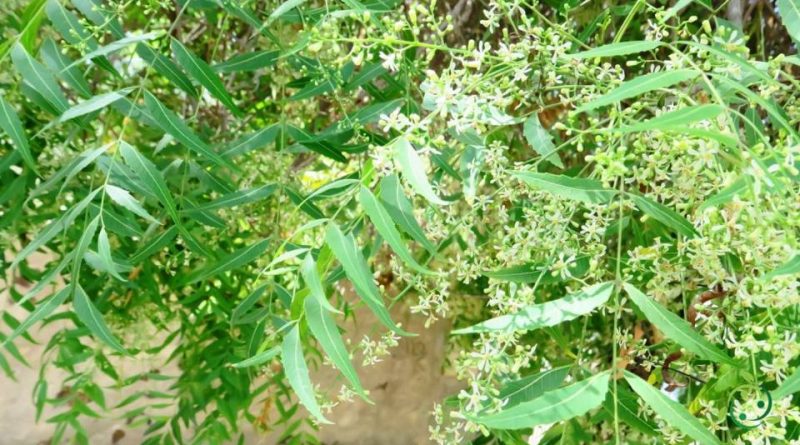Reproduction of the Nimtree
Reproduction of the Nimtree
The nimtree (Azadirachta indicates A. Juss.) is a tree of the Meliaceae family native to an area between Bangladesh, India and Burma.
Suitable breeding habitat –
The nimtree is a plant native to Bangladesh, India and Burma.
It was later introduced to West Africa in the early 20th century to provide shade and prevent the Sahara Desert from extending south. Foresters have also introduced this tree to Fiji, Mauritius, Saudi Arabia, Central and South America and the Caribbean islands. There are experimental plantations in the southern United States.
Its natural habitat is that of mixed forests and lowland evergreen forests.
Propagation –
Azadirachta indica is a very robust tree and is said to grow almost everywhere in the lowland tropics and subtropics. It is grown at altitudes of up to 1,500 meters, but grows best below 700 – 800 meters.
This plant grows best in areas where annual daytime temperatures are between 26 and 40 ° C, but can tolerate between 14 and 46 ° C.
Mature plants tolerate frost, but seedlings are more sensitive, in addition it prefers an average annual rainfall in the range of 450 – 1,200 mm, but tolerates 200 – 2,000 mm.
From a pedological point of view it prefers well-drained soil and tolerates poor soils and is resistant to drought once established. The plant dies quickly in moist soils and fails in deep dry sands where the dry season’s water table is below 18 meters. It tolerates moderate soil salinity and prefers a pH between 5.5 and 7, tolerating between 5 and 7.5.
The plants also want a sunny position but can tolerate quite heavy shade during the first few years, even if they require large amounts of light afterwards.
It is a fast growing tree that can reach a height of 4 – 7 meters after 3 years, and 5 – 11 meters after 8 years. Trees can begin to flower and bear fruit at the age of 4 – 5, but cheap seed quantities are only produced after 10 – 12 years.
Propagation can occur by seed. The seed should be sown as soon as it is ripe; it does not require pre-treatment, even if the de-pulping and cleaning of the seeds considerably improves the germination rate.
The seed can be sown in seedbeds directly in situ or in containers, covering it with about 1 cm of compost.
Ripe seeds germinate within a week, with a germination rate of 75 – 90%. The seedlings can be placed in pots when they are about 5 cm tall.
Propagation can also take place by root cuttings to be placed in a compost mixed with sand and in a shaded area, kept moist until rooting and release of the new leaves.
Ecology –
The nimtree is a plant whose seeds are an important source of limonoids, triterpenoid compounds also present to some extent in the leaves, bark and other tissues.
Over 100 biologically active compounds have been identified in the tree. The main ones: azadirachtin, azadiradione, fraxinellone, nimbina, salannina, salannolo, vepinina, vilasinina etc ..
This plant has numerous medicinal properties, so much so that in India it is called “the village pharmacy”. For centuries the Indians have resorted to this plant to treat pain, fever and infections, they also clean their teeth with its twigs, treat skin disorders with the juice obtained from the leaves and drink the infusion as a tonic.
Scientists have shown growing interest in nīm in recent years. However, a scientific report illustrating the possible uses of this plant warns: «Even if it seems that the possibilities are almost limitless, nothing precise is yet known about nīm. Scientists most enthusiastic about this plant and its possible uses admit that at the present stage the evidence supporting their expectations is not definitive ». Nonetheless, the report also says: ‘Two decades of research have shown promising results in so many fields that this obscure species could prove enormously useful to both poor and rich countries. Even some of the most cautious researchers say that ‘nīm deserves to be called a wondrous plant.’
Neem is present in tropical regions where it reaches 30 meters in height and about 2.5 meters in circumference. As it rarely sheds its leaves, it provides shade all year round. It grows fast, requires little care and survives well in poor soils.
In addition to providing year-round shade in countries where it is very hot, this tree can provide firewood; moreover, its termite-resistant wood is used in construction and carpentry.
The neem tree is known for its drought resistance. It normally thrives in areas with sub-arid to sub-humid conditions, with annual rainfall of 450–1,200 mm. It can grow in regions with annual rainfall of less than 400 mm, but in these cases it largely depends on groundwater levels. It is a typical tropical to subtropical tree. Neem is one of the very few shade trees that thrive in drought prone areas, such as. in the dry and southern coastal districts of India and Pakistan. In India and tropical countries it is very common to see neem trees used to shade roads, around temples, schools and other similar public buildings, or in most people’s backyards. In very arid areas, trees are planted on large tracts of land.

